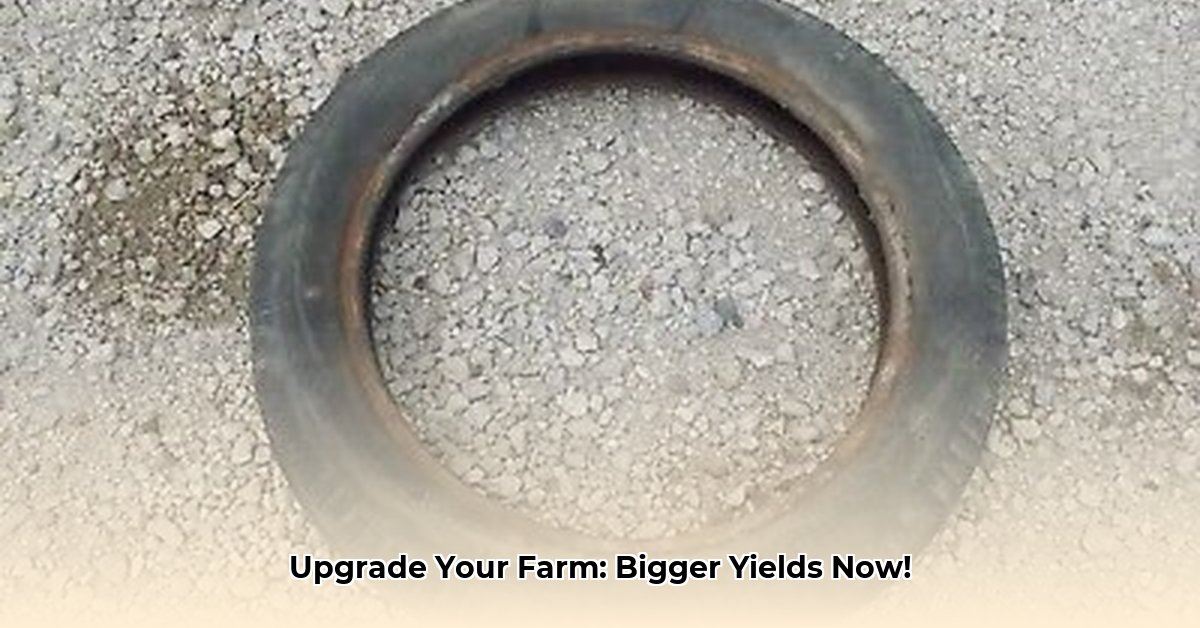
Finding the right tires for your tractor is crucial for efficiency and profitability. 4.00 x 19 tires, commonly used on smaller tractors, significantly impact your farm's performance. This guide helps you choose, maintain, and troubleshoot these essential components, maximizing your investment and minimizing downtime. Don't let tire issues slow you down – let's get those wheels turning smoothly! For more information on craftsman tractor tires, check out this helpful resource: Craftsman Tractor Tires.
Choosing Your Perfect 4.00 x 19 Tires: More Than Just Rubber
Selecting the right 4.00 x 19 tires depends on your farming practices and soil conditions. It's like choosing the right tool for the job – you wouldn't use a hammer to screw in a screw, would you?
Soil Type: Deep, aggressive treads are ideal for muddy, clay soils, offering superior grip. Shallower treads perform better on hard-packed or dry, sandy loam, minimizing compaction. What soil type dominates your fields?
Workload: Heavy hauling demands tires with a higher load capacity. Always check the manufacturer's specifications to ensure the tire can consistently handle the weight. Are you regularly hauling heavy loads, or is your work mostly light tillage?
Understanding the Numbers: "4.00" refers to the approximate tire width in inches, and "19" indicates the wheel rim diameter in inches. This is fundamental to ensuring proper fit and performance. Do you understand the implications of these measurements on your tractor's fit and function?
Keeping Your Tires in Tip-Top Shape: Maintenance is Key
Proactive maintenance extends tire life and improves efficiency. Regular checks prevent minor issues from escalating into costly repairs. This is akin to a regular check-up for your tractor – preventative medicine improves long-term health.
Step-by-Step Tire Care:
Pressure Checks: Use a reliable gauge to maintain the correct tire pressure. Underinflation increases wear and reduces fuel efficiency, while overinflation damages tires and rims. Check pressure frequently – a daily habit is best.
Visual Inspections: Regularly inspect tires for cuts, embedded debris, and uneven wear. Addressing small problems early prevents bigger issues down the line.
Tire Rotation: Rotating tires periodically ensures even wear across all four, maximizing lifespan. Consult your manufacturer's recommendations for the optimal rotation schedule.
Cleaning: Clean tires regularly, especially after working in muddy or dirty conditions. Removing mud and debris prevents accelerated wear.
Troubleshooting Troubles: Common Problems & Solutions
Even with careful maintenance, problems arise. Here are some common issues and solutions:
| Problem | Possible Cause(s) | Suggested Solution(s) |
|---|---|---|
| Punctures | Sharp objects, rough terrain | Repair (if repairable) or replace the tire. |
| Uneven Wear | Incorrect inflation, misalignment, improper rotation | Adjust inflation, check alignment, rotate tires regularly. |
| Slow Leaks | Punctures, faulty valve stems, deteriorated inner tubes | Repair or replace the valve/tube; carefully patch punctures. |
| Rapid Pressure Loss | Severe sidewall damage, significant cuts | Replace the tire. |
Addressing small problems promptly saves you time and money.
Cost vs. Value: The Long-Term Perspective
While initial costs vary, consider the long-term value. Higher-quality tires typically last longer, translating to fewer replacements and lower overall costs. Dr. Amelia Hernandez, Agricultural Engineer at the University of Nebraska-Lincoln, states, "Investing in durable tires often pays off in the long run due to reduced downtime and increased efficiency." Consider the total cost of ownership rather than just the upfront price.
Conclusion: Rolling Towards a More Productive Future
Choosing the right 4.00 x 19 tires is a crucial investment. By understanding your needs, performing regular maintenance, and addressing problems promptly, you'll optimize your farm's productivity and profitability. Remember, well-maintained tires contribute significantly to a successful harvest!